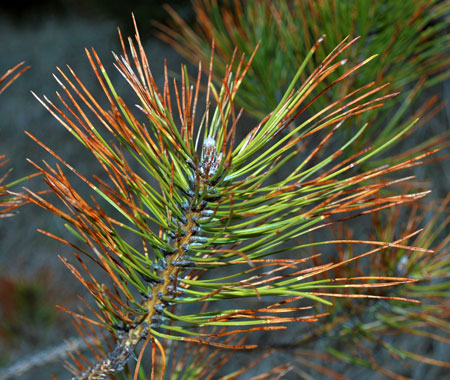

Washington State University in Puyallup has a document indexing plant hosts of various pathogens, and for Cedrus they list Sirococcus species as well as Phomopsis.
#Needle blight tactics full#
Chemical control: No chemicals are specifically registered for this disease on cedar.” (The full information is available in the link above.) Young trees are more likely to suffer damage than older trees. The tip of the needle beyond the band eventually dies leaving the base of the needle alive and green. The spots become tan, yellow, or reddish-brown, and may encircle the needles to form bands. (…) Temperatures of 60 to 70 F are most favorable for disease development.(…) Cultural control: Remove and destroy blight plant material and debris that is found under trees or caught in limbs. Dothistroma needle blight first appears as dark green, water-soaked spots on the needles. Conidia are dispersed by splashing water in spring and summer. The disease cycle is completed in 1 year, although spore dispersal from dead parts may continue (…) 10 months. The majority of Phyllosticta species are regarded as secondary pathogens on conifers, and many of them are poorly understood. Infection is on or adjacent to needle bases on new shoots. Pierce Taylor and Peng Tian MU Plant Diagnostic Clinic Phyllosticta Needle Blight, caused by Phyllosticta thujae, is a fungal pathogen which primarily infects Arborvitae. More of a problem in years with prolonged wet, cool springs. have been associated with blighted needles of Atlas and Deodara cedars in both Oregon and Washington however, Sirococcus is found most often. “The fungi Sirococcus conigenus and Kabatina sp.

Here is what the print companion to the website (2008 Pacific Northwest Plant Diseases Management Handbook) says about Cedar needle blight: Oregon State University’s IPM site mentions Kabatina and Sirococcus conigenus. I can’t be absolutely certain what the cause might be, but taking a look at some Northwest integrated pest management resources could provide ideas on the likely culprits.


 0 kommentar(er)
0 kommentar(er)
